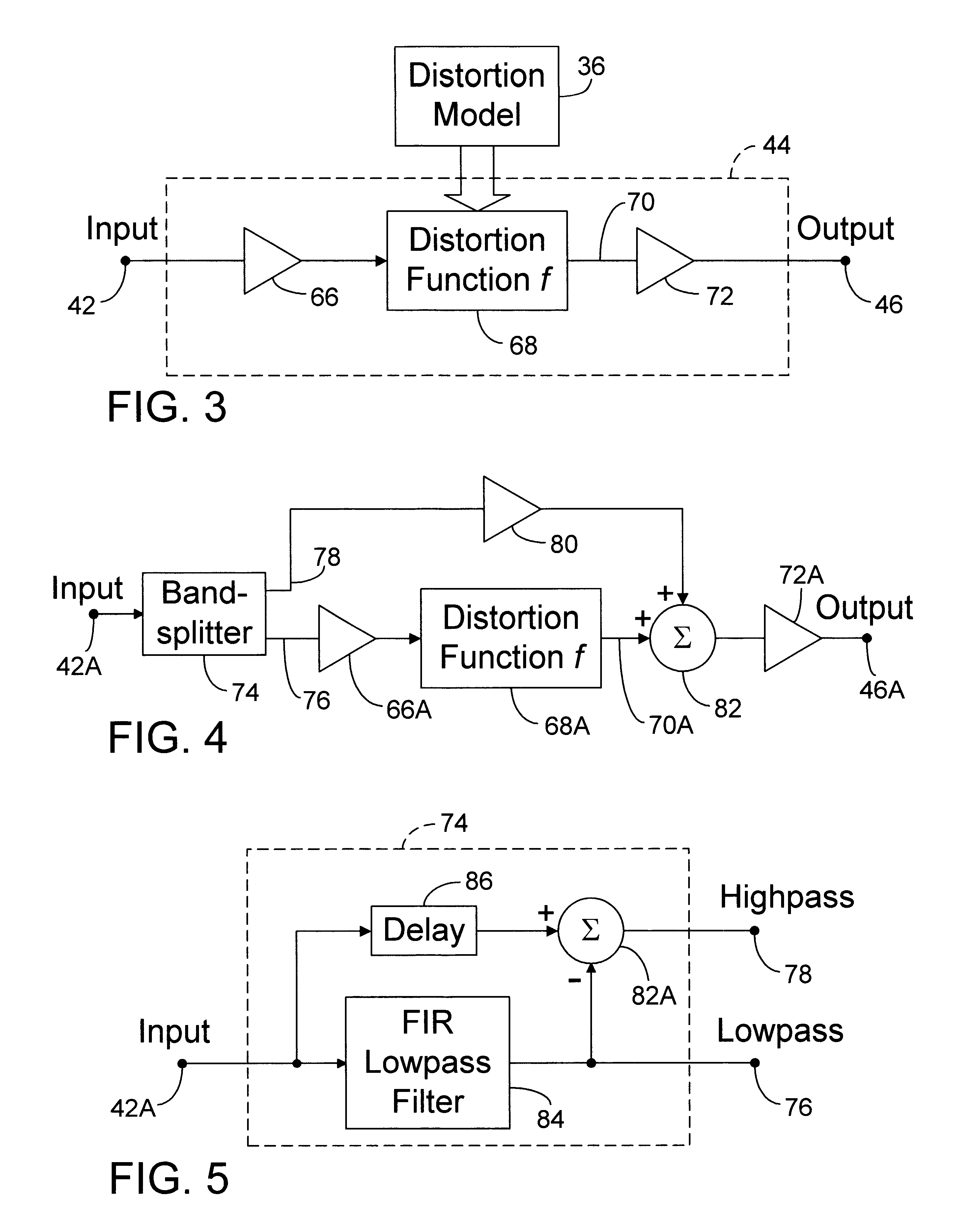Method and apparatus for the modeling and synthesis of harmonic distortion
a technology of harmonic distortion and modeling and synthesis, applied in the direction of instruments, electrophonic musical instruments, gain control, etc., can solve the problems of harsh quality, lack of digital distortion effects, and undesirable harmonic distortion types
- Summary
- Abstract
- Description
- Claims
- Application Information
AI Technical Summary
Benefits of technology
Problems solved by technology
Method used
Image
Examples
example graphs
FIGS. 19a through 21c are graphs that demonstrate some of the basic features of the present invention. The graphs depict actual examples produced by the prototype of the present invention.
FIG. 19a is a graph of an arbitrary transfer function created as described in the Arbitrary Distortion Model section. The bar graph in FIG. 19b shows the amplitudes of the first fifty-two harmonics of the distortion model derived from the transfer function. The angularity of the transfer function accounts for the higher harmonics of the distortion model. The bar graph in FIG. 19c shows the harmonic amplitudes of a modified version of the distortion model shown in FIG. 19b. The harmonics above the nineteenth are eliminated. The phases of the harmonics are unchanged. FIG. 19d shows a graph of a distortion function using the modified version of the distortion model. Note the smooth curves in comparison to FIG. 19a. When the distortion model retains two hundred or more harmonics, a graph of the distort...
PUM
 Login to View More
Login to View More Abstract
Description
Claims
Application Information
 Login to View More
Login to View More - R&D
- Intellectual Property
- Life Sciences
- Materials
- Tech Scout
- Unparalleled Data Quality
- Higher Quality Content
- 60% Fewer Hallucinations
Browse by: Latest US Patents, China's latest patents, Technical Efficacy Thesaurus, Application Domain, Technology Topic, Popular Technical Reports.
© 2025 PatSnap. All rights reserved.Legal|Privacy policy|Modern Slavery Act Transparency Statement|Sitemap|About US| Contact US: help@patsnap.com



